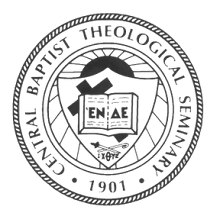It usually startles people to learn that the
Bible describes followers of Jesus as saints.
That is a term we usually reserve for those whose lives shine more
brightly than others, through whom we see the mercy and grace of God more
clearly. It seems that the Risen Christ
thinks much more highly of us than we do of ourselves, and inspired Scripture
uses this nomenclature.
Primarily found in
the epistles of Paul and Acts, the term saint comes from the Greek work hagios, which means “consecrated to God,
holy or sacred.” It is regularly used in
the plural to suggest that communities form saints, and being a Christian is
not a solitary enterprise.
In Ephesians, Paul
describes the riches of God’s glorious inheritance among the saints, the
immeasurable greatness of divine power available to those who believe. The same mighty power that raised Jesus from
the dead is at work within his body, the church (Ephesians 1:19-23). This inheritance will allow us to face all
that life throws at us with confidence and hope. And when death draws near, we cling to the
hope that we will share in Christ’s resurrection.
 |
| Mother Mariam Thresia heals the Maharaja, from Art in the Christian Tradition, a project of the Vanderbilt Divinity Library, Nashville, TN. |
In more recent
years, the celebration of All Saints Day has moved beyond the Roman Catholic
Church, and many other traditions are claiming its liturgical
significance. We know that the history
of Halloween, and All Hallows Day (All Saints), are bound together. It is a time of remembering the dead and
celebrating their contribution to our lives, and beyond.
 |
| Dancing Saints Icon (detail) at St Gregory of Nyssa Episcopal Church, Photo ©David Sanger | San Francisco, California |
It is also an acknowledgement
of the communion of saints, which is the belief that the whole Body of Christ,
whether in heaven or on earth, remain in relationship. Those who have died in Christ are not too far
away, and holding them in memory and hope contributes to their inheritance.
I especially give
thanks for my teachers, especially those who taught the Bible and
theology. They offered wisdom and a way
of engaging the rich heritage of Christian faith. More important, they lived in ways that made
the Gospel come to life.
Saints help us see
the pathway to follow. Their faithful
service and confidence encourages those who remain on the way. As a cloud of witnesses, they remind us that
it is possible to pursue holiness and not give up when hardship comes.
 |
| Golden Rule, from Art in the Christian Tradition, a project of the Vanderbilt Divinity Library, Nashville, TN. |
There are saints in
Central’s history, generous persons who so believed in the mission of the
seminary that they simply would not let the school die. They gave their property, their inheritance,
their energy, and their prayers for the sake of preparing persons to serve the
church and the world. We give thanks for
them, even as our mission continues to depend upon the generosity of saints
today.
Molly T. Marshall
Central prepares creative leaders for diverse ministry contexts.


No comments:
Post a Comment